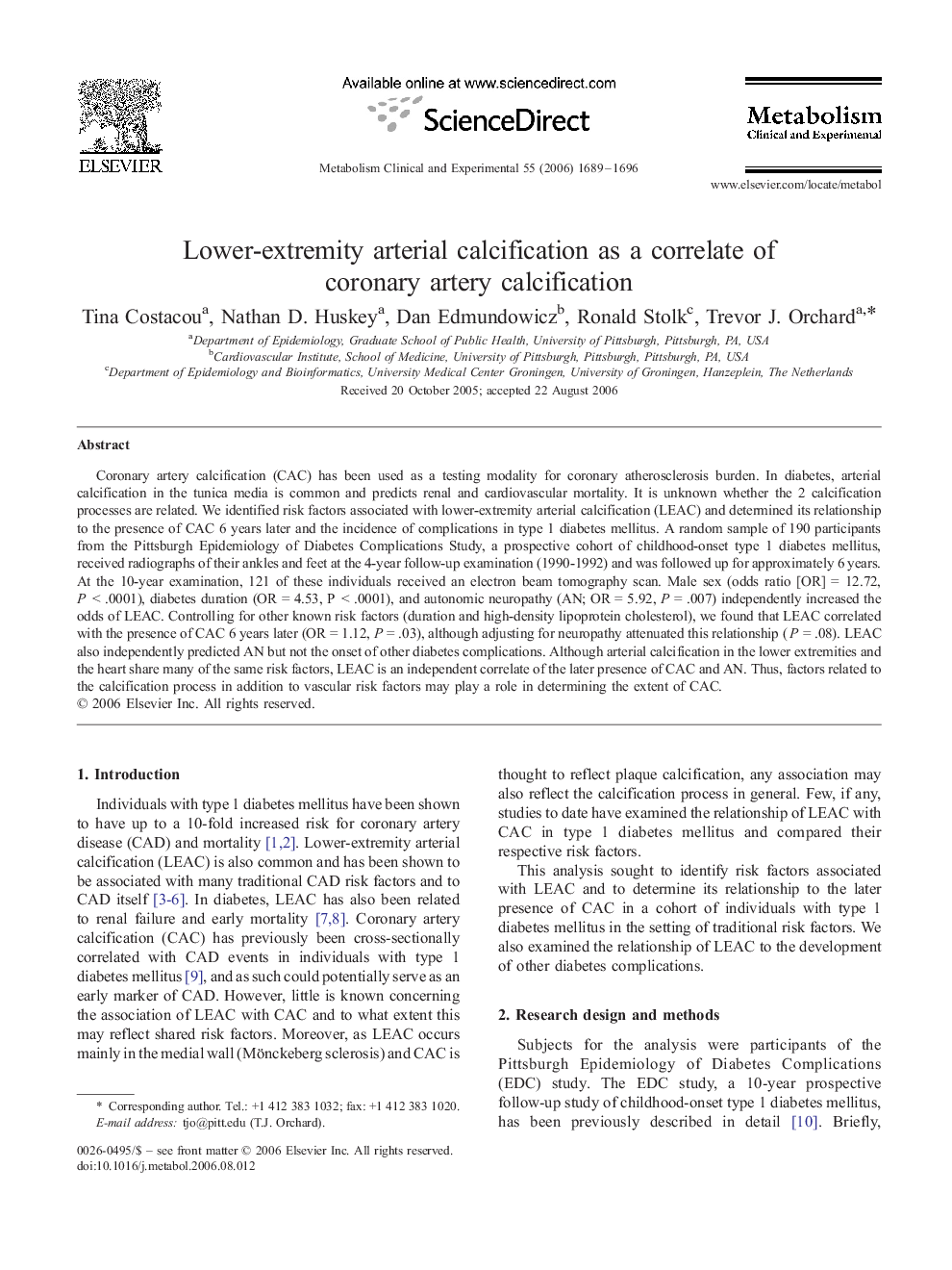| Article ID | Journal | Published Year | Pages | File Type |
|---|---|---|---|---|
| 2806512 | Metabolism | 2006 | 8 Pages |
Abstract
Coronary artery calcification (CAC) has been used as a testing modality for coronary atherosclerosis burden. In diabetes, arterial calcification in the tunica media is common and predicts renal and cardiovascular mortality. It is unknown whether the 2 calcification processes are related. We identified risk factors associated with lower-extremity arterial calcification (LEAC) and determined its relationship to the presence of CAC 6 years later and the incidence of complications in type 1 diabetes mellitus. A random sample of 190 participants from the Pittsburgh Epidemiology of Diabetes Complications Study, a prospective cohort of childhood-onset type 1 diabetes mellitus, received radiographs of their ankles and feet at the 4-year follow-up examination (1990-1992) and was followed up for approximately 6 years. At the 10-year examination, 121 of these individuals received an electron beam tomography scan. Male sex (odds ratio [OR] = 12.72, P < .0001), diabetes duration (OR = 4.53, P < .0001), and autonomic neuropathy (AN; OR = 5.92, P = .007) independently increased the odds of LEAC. Controlling for other known risk factors (duration and high-density lipoprotein cholesterol), we found that LEAC correlated with the presence of CAC 6 years later (OR = 1.12, P = .03), although adjusting for neuropathy attenuated this relationship (P = .08). LEAC also independently predicted AN but not the onset of other diabetes complications. Although arterial calcification in the lower extremities and the heart share many of the same risk factors, LEAC is an independent correlate of the later presence of CAC and AN. Thus, factors related to the calcification process in addition to vascular risk factors may play a role in determining the extent of CAC.
Related Topics
Life Sciences
Biochemistry, Genetics and Molecular Biology
Endocrinology
Authors
Tina Costacou, Nathan D. Huskey, Dan Edmundowicz, Ronald Stolk, Trevor J. Orchard,
